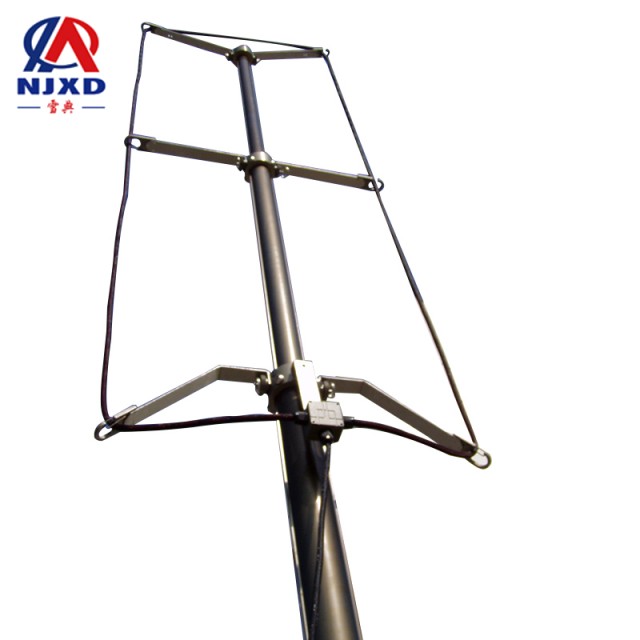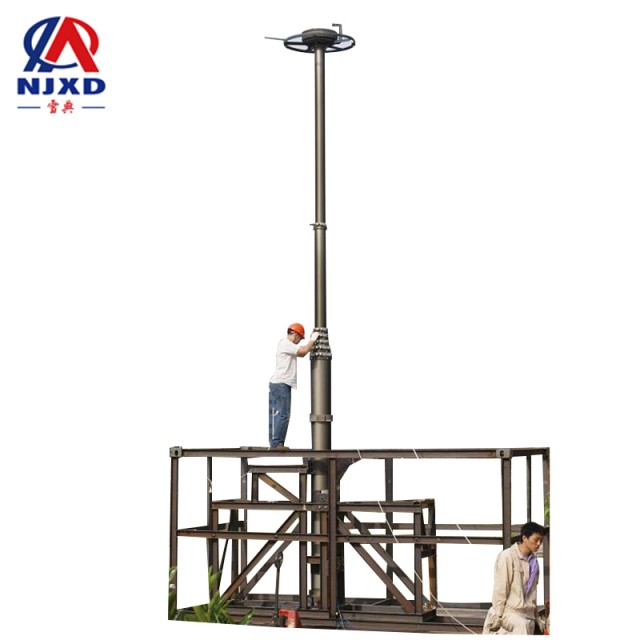NEWS
Scattering communication of lifting antenna bracket
Time:2021-07-15 View:

Scattering communication refers to over-the-horizon communication based on the scattering effect of non-uniformity in the stratosphere and ionosphere on electromagnetic waves. Sub-Ionosphere scattering communication, tropopause scattering communication and meteor trail communication. The scattered radio wave energy is sent to multiple directions, and the signal energy of acceptance point over-the-horizon distance will be very weak and fade. Therefore, a high-power transmitter, high gain antenna and high sensitivity receiver, and adopt diversity receiving mode.
History
In the early 1950 s, the United States put forward the idea of establishing a stratosphere scattering communication system, and established a stratosphere scattering communication circuit in the 1950 s. In the mid-50s, China began to study the problem of the propagation of the tropopause scattering. In the early 60s, it developed the simulated tropopause scattering equipment. In the 70s, it began to develop the digital tropopause scattering equipment, and successively built the station and put it into use. In the early 1960 s, the United States established an ionosphere scattering communication circuit. However, due to the small capacity of ionosphere scattering communication, the transmission power is required to be large, which limits its development and application.
Definition
Scattering communication is an over-the-horizon communication method, which uses the scattering effect of air medium on electromagnetic wave to communicate between the two places. Stratosphere, ionosphere, meteor trail and artificial scattering objects all have the properties of scattering electromagnetic waves. If the electromagnetic waves emitted by the transmitter are radiated to these places, they will be scattered in all directions, and the electromagnetic waves emitted in the oblique forward direction can reach far away. If the receiver in the distance has high enough sensitivity, it can receive the scattered weak electromagnetic wave, thus realizing communication.

Features
Due to the large transmission loss of electromagnetic wave in scattering communication, the signal reaching the receiving end is very weak. In order to realize reliable communication, high-power transmitter, high-sensitivity receiver and antenna with high gain and narrow beam are generally adopted.
Over-the-horizon communication based on the scattering effect of radio waves by the non-uniformity of the media in the atmosphere. According to the difference of scattering media, scattering communication is generally divided into tropopause scattering communication and ionosphere scattering communication. Generally speaking, scattering communication mostly refers to the contrabor-stratosphere scattering communication.
Turbulent clusters with different dielectric constants are generated due to the turbulent motion of the atmosphere in the tropopause. When radio waves irradiate these uneven turbulent clusters, the current is induced on each non-uniform body and becomes a secondary radiator, thus sending out the secondary radiation wave of this frequency in all directions, which is the scattering phenomenon. Stratosphere scattering communication is an over-the-horizon radio communication realized by using this phenomenon. Due to the significant phenomenon of tropopause scattering in the 200~8000 MHz frequency band, tropopause scattering communication mainly works in this frequency band.
And scattering communication can carry out over-the-horizon communication, with a distance of 100~300km and a capacity of more than ten channels to dozens of channels; It is not affected by nuclear explosion, Sunspot, magnetic storm, Aurora, etc. It can cross bays and unmanned smoke areas; It has strong confidentiality, stability and reliability, and has certain invulnerability; It is convenient for mobile emergency installation. It is widely used in military communications.
Ionosphere scattering communication
Ionosphere scattering communication uses the ionosphere with a height of 85~100km as scattering communication. Its characteristic is that it is not affected by ionosphere disturbance, especially suitable for communication in high latitude and across Aurora region. The available frequency is 40 to 50MHz. The communication capacity is similar to that of short wave communication, which can only connect one call. Its equipment is very large, expensive and rarely used.
Stratosphere scattering communication
The Earth's atmosphere is generally divided into ionosphere, Stratosphere and stratosphere. The tropopause is the lowest layer of the atmosphere, and its lower boundary is connected with the ground. The upper boundary is the tropopause (the junction with the stratosphere), which is generally defined as the place where the temperature no longer decreases with the increase of height, the average height of the mid-latitude area is 10~12km, and the low (high) latitude area is higher (low), and generally summer is higher than winter. For the whole atmosphere, the stratosphere is only a very thin layer, but it concentrates 90% of the atmospheric mass. The main weather phenomena such as wind and rain, lightning, clouds and so on all occur in this layer.
Stratosphere scattering communication is a scattering communication that uses uneven air mass existing in the stratosphere from several kilometers to 20km above the ground as scattering medium. The farthest communication distance can reach 800~1000km, and the available frequency is 100MHz ~ 10GHz. In the mid-50s of the 20th century, our country conducted scattering transmission experiments. In the early 1960 s, many tropopause scattering circuits were tried out, and in the 1970 s, a tropopause scattering communication system was established, which all adopted digital channels.
The transmission loss and fading fluctuation of tropopause scattering are very large. Different from line-of-sight communication, the transmission loss is proportional to the third power of the frequency and varies with angle of scattering (the angle between the beam of the transmitting and receiving antenna) the loss increases by about 10dB for every 1 degree increase, and the transmission loss decreases with the increase of atmospheric refraction coefficient.

Advantages
The advantage of tropopause scattering communication is that the communication distance is long, the single jump distance is generally about 300 kilometers, and the multi-jump connection can reach thousands of kilometers; It is not affected by nuclear explosion and solar flare, and the transmission reliability is high, generally, it can reach 99 ~ 99.9%; The passband is wide, which can reach more than 10 MHz. It can realize multi-channel communication and can transmit telephone, telegraph, data, etc.
Its disadvantage is that the transmission loss is large and increases sharply with the increase of the distance of communication. Therefore, high-power transmitter, highly sensitive receiver and huge antenna are used, so it costs a lot. The scattering signal has a relatively deep fast fading, and its level is also affected by the temperature, humidity and air pressure in the scattering body, and has obvious seasonal and day-night changes. The degree of decline is usually stronger in summer than in winter, and stronger in the morning and evening than at noon. In order to overcome or reduce the influence of fast fading, diversity reception and other technologies are often used. Stratosphere scattering communication is mainly used to establish strategic and campaign communication trunk lines.
In the ionosphere of 75~90 kilometers above the Earth, the non-uniform body of the ionization density produces scattering effect on the incident ultra-short wave radio wave energy. The over-the-horizon radio communication using this scattering signal, it is called ionosphere scattering communication. The most suitable frequency band for ionosphere scattering communication is 35~60 MHz, which is basically not affected by nuclear explosion and solar flare. Its communication distance is relatively long, and the single hop distance can reach 1000~2000 kilometers. But its passband is very narrow, usually 2~3 kHz, so the communication capacity is very small, which is generally only used for telex communication. The signal also has fast fading phenomenon, and the signal level also has seasonal and day-night changes.
Development Trend
(1) due to the fading and delay of scattering channel, its communication capacity is limited, but the development of diversity technology and signal processing technology improves the speed of digital communication, in the 1980 s, it reached 12Mbit/s internationally, 4Mbit/s in China, and the reliability reached more than 99%.
(2) in order to adapt to the characteristics of time-varying channels and make full use of the energy of multi-path transmission, new modulation and demodulation technologies and coding technologies are studied, in order to obtain the best diversity effect and overcome the interference between information codes.
(3) study various adaptive technologies to adapt to channel changes and be used in mobile scattering equipment.

CATEGORY
NEWS
- Main types of antenna telescopic mast microwave communication
- Scattering communication of lifting antenna bracket
- Emergency Communication Command car infrared communication lifting
- Classification and application of lifting tower radio stations
- Basic introduction of radio wave propagation lifting antenna bracket